Hey Hey and a Big G'Day toya,
What a beautiful day and what wonderful weather we are having here in southern China.
The skies are blue and totally without those pesky fluffy little sheep (clouds) that get in the way of the sun. All around me people are wearing shorts and tee shirts and of course silly me has to sweat it out in winter pants and long sleeves as I didn't bring anything at all summerish. It really isn't as bad as it sounds as usually there is a cool breeze that keeps me kind of cool.
I have been told that the warmth will not last much longer so it was best to bring the clothes I did. Easier said than believed after walking eight hours every day!
I haven't really been up to much the past few days except for sleeping and several relaxing walks along the river in the evening. Yesterday I spent hours doing hand washing and by the end of it I could barely lift my arms and in the evening I had a bit of trouble with my chop sticks as my hands were so tired. The only downside to tavelling in winter is hand washing winter clothes, they are so thick and heavy and take so long to wash. I remember last winter Luo Wei's Grandmother asked her to wash one of her jackets and she was so impressed at how clean it was she got it back that she gave Luo Wei several other thick winter jackets to wash that same afternoon.
The poor little bugger could barely lift her arms or use her chop sticks for the following few days.
Most people in western countries will honestly never comprehend how lucky they are in life. Simple things like washing our clothes are done with out thought. Flick a switch, throw in some power (usually too much when it comes to me) and then walk away. I would say that well over eight hundred million people here in China don't own a washing machine or a fridge. They have public washing basins in most built up areas and in rural areas there is usually the dirty creek, river or gutter that runs through town.
In many places I see people washing their clothes or vegetables in water I wouldn't give to my pet, sadly though it is all they have.
What doesn't make sense is the fact that they HAVE to use this water yet they throw their rubbish in it and rarely ever clean it. Many times I have found myself standing there watching and after checking out the surroundings I slowly walk off wondering what actually goes through these peoples minds when they do such things but then I begin to compare things to back home where we actually do the same but with chemical pollution and sewage.
What is worse, rubbish such as vegetable waste and other litter or chemical pollution and sewage? At least here sewage is actually valuable and used in farms all over China and not put into rivers.
Anyhow, back to the blog, if I was smart I would have taken my washing to Shamian Island.
HINT: Around the Guangzhou Hostel on Shamian Island there are many signs saying 'laundry'.
REMINDER: Never ever allow Luo Wei to hand wash any of her heavy winter clothes again!
Today as I had no plans when I woke I decided that a visit to the memorial of the founder of modern China was a good plan as any as without him I most probably wouldn't be here writing this in a Mc Donald's restaurant with my usual ElcheapO coffee beside me. If I remember I will Wiki some more information and add it prior downloading this page as it is definitely worth reading more about this guy.
Just incase I forget I'll add the small amount of text the LP has.
Sun Yat Sen Memorial Hall
(More on Sun Yat Sen below the blog)
Found on Dongfeng Zhonglu (and right above the Sun Yat Sen Metro Station) near the corner of Jiefang Beilu is one of Guangzhou's most beautiful and important buildings, the Sun Yat Sen Memorial Hall. Built between 1929 and 1931 to commemorate the man whom both the Kuomintang and the Communist Party consider the 'Father of Modern China'. The construction was funded by both overseas Chinese and the local people to the memory of Dr. Sun Yat-sen, who led the overthrow of the last dynasty in 1911 and founded the first republic ever in China in 1912.
The exquisite assembly hall has a seating capacity of 4,700 people.
The oldest ceiba in Guangzhou City grows in the hall, like a centuries-old man, witnessing great changes of this city. You can also see the two biggest white jade orchid trees of Guangzhou. The huge bronze statue of Sun Yat-sen was set up in 1956 in front of the memorial hall. Stepping on the monument by a steel spiral staircase, you are presented with a panoramic view of the memorial hall.
The LP says that the hall is rather dull but I found it more than a delight to walk around and the grounds themselves were very peaceful and full of colour. The memorial hall cost 10 Yuan to enter and I was told that the grounds were supposed to cost 5 Yuan to enter but when the ticket person is snoozing I guess its best not to wake them for such a small amount of money especially when all construction is complete.
Not far from the Sun Yat Sen Memorial Hall can be found the Sanyuangong Temple.
It's not on any of the maps and I only found it because it was listed on one of the exit signs at the Sun Yet San metro station. I then past it several times as I thought the stairs were actually leading up and into Yuexiu Park which I visited during the first few days of being here. It wasn't until a boy aged around eight came over to me and asked if I was lost. His English was amazing and after he pointed to the stairs I had just past we sat to chat for about twenty minutes.
His mother was an absolute stunner and was full of all types of questions about my life.
The temple was a rather busy little bugger with families racing in and out with loads of incense. I can never actually understand why many people buy incense, race to a Bow Station and after bowing several times leave the incense there without lighting it. I always hang around for a little and watch the temple staff gather it up and take it back to be resold.
Wouldn't it be easier to simply leave and little extra money at the Bow Station?
SANYUANGONG TEMPLE (The Three Origins Temple)
The Triple Origin Temple is located at the foot of Yuexiu Mountain, is a celebrated sacred space in the Baiyue region and has a history of over one thousand six hundred years. It is recorded that during the Eastern Jin dynasty (AD317 to 420), a man named Bao Jing of the Southern Sea built the first 'place' for his daughter Bao Gu to cultivate Dao and practice medicine.
As it was located at the foot of Yuexiu Mountain, it was named "Yuegang Court".
As it was north of the city, it was also called "the northern temple" by people of later generations.
During the Ming dynasty (AD1368 to 1644), the imperial official in charge of astronomy came to Guangzhou and supposedly said to the locals, "Heaven protects all the Santai constellations, whose light brightens the Sui City in turn. The Yuexiu Moutain is full of vital breath. You should change the Yuegang Court into the Triple Origin Temple and worship the Great Emperors of the Triple Origin so as to correspond to the heavenly auspicious vital breath."
They all agreed and began raising the funds to rebuild the Yuegang Court into the Triple Origin Temple, making the statues of the deities of the three origins (the upper one, the middle one and the lower one) in the main hall and moved the statue of Bao Go to a side hall.
During the Qing dynasty (AD1644 to 1911), money was once again raised, this time to enlarge the temple. This resulted in the construction of the Hall of Numinous Officials at the mountain gate, the main hall the Triple Origin Hall, the Bell and Drum Towers, the Hall of Patriarch Lü, the Hall of Bao Gu, the Hall of the Venerable Sovereign, the Hall of the Jade Emperor, the Hall of the Big Dipper along with several houses around the complex..
Sadly during the anti-Japanese war the temple was heavily damaged.
Happily though after liberation it was reconstructed.
During the "Cultural Revolution", the Taoists were forced to leave the temple, and none of the deities' statues and historical relics survived the pesky Red Army. Since 1982, the Guangzhou Daoism Association has started to renovate it comprehensively and now the temple has taken on an entirely new look. The whole temple is built against the mountain and the halls and pavilions are arranged on different levels.
How wonderfully serene and elegant.
Well worth a visit I think!
ANCIENT AND MODERN BEIJING LU
I spent the rest of the afternoon and evening walking around the Beijing Lu area.
Beijing Lu is probably one of the cities most famous streets.
It's around half a kilometer long and would have to have around five hundred people per square inch and it is just as colourful as it is packed with people. It is filled to the brim with shops selling everything from food to clothes. Running down its centre are several glass displays of what the street has looked like at different times in the past. From what I have read the city virtually grew up around Beijing Lu and judging from all the different displays and cobble stone types and patterns I wouldn't doubt it.
Beijing Road is central axis of ancient Guangzhou city and the most prosperous commercial distributing center in the history of the city. Reputed "Famous Street of Lingnan", its average traffic is supposedly around three hundred and fifty thousand people which makes it Guangzhou's most bustling pedestrian street and obviously always full of the sound of expensive high heels and free flowing Yuan. It is a figure I find so hard to comprehend as when I sit in the Melbourne city mall I would be lucky to see between three hundred and fifty people to one thousand people per day. Yuehua Road which is found at the north end of Beijing Lu was once the 'downtown' of Guangzhou city from the Nanyue Kingdom period of the Western Han Dynasty (BC206 to AD220) to the Qing Dynasty (AD1644 to 1911).
All around Beijing Road the ancient cities cultural relics remain.
According to history and research, there are over ten existing, or established or excavated historical/cultural sites around the Beijing Road area for example Panyu City of Qin and Han Dynasties, Site of Dockyard of Qin Dynasty, Site of Nanyue Kingdom Palace, Site of Qinghai Military Tower of Tang Dynasty, and Royal Garden Site of Southern Han Kingdom. Also there are many time-honored shops and famous stores in the area which include the Yushan Market which was the first food market in Guangzhou and the Xindaxin Company which was one of the most famous department stores in Guangzhou in 1940s.
Beijing Lu is also awesome for those like me who always seem to be in search of their next meal.
All around and close by Beijing Lu's southern end can be found all types of eateries. Fancy Vietnamese or Thai then head across town to here. I began drooling when I first spotted all the different cuisines I had a choice of but when I noticed the huge lines of people at each restaurants door I decided that when in China do as the Chinese do.
Hock, spit and yell whilst eating delicious market place food!
Beers N Noodles toya.....shane
PS: PHOTOS can be found beneath all text like usual.
__________________________________________________
The soundtrack to this entry was by the mighty S.O.D
The album was the mighty Live At Budokan!
__________________________________________________
A Little on Dr Sun Yat-Sen
Born in the Cuiheng Village, Xiangshan County (now Zhongshan City), Guangdong Province.
Sun Yat-sen was outstanding forerunner of the democratic revolution in modern China.
He was a valiant fighter who led the struggle to overthrow the feudal monarchy and build up a democratic republic. He was a patriot who fought against imperialist aggression and for the independence and freedom of China. He was also a great revolutionary and a great statesman. Because his family was poor, he began to do farm work at the age of six and at age ten he was enrolled in a small private school.
In 1878, Sun Yat-sen followed his mother to Honolulu, where his elder brother Sun Mei worked.
In 1883 after studying in Honolulu for five years, Sun Yat-sen returned to China.
In the next few years he studied at the Canton Hospital Medical School and the College of Medicine for Chinese in Hong Kong. In 1892, Sun Yat-sen graduated with excellent marks from the College of Medicine for Chinese in Hong Kong and thereafter began to practise medicine in Macao and Guangzhou (formally called Canton). The beginning of 1894 found Sun Yat-sen on his way north where he submitted a petition proposing that China model herself after the Western, countries and carry out reforms to bring about independence and prosperity. However, his proposal was turned down. This, Plus China's miserable defeat in the Sino-Japanese War, destroyed Sun's remaining illusions about the Qing Government.
Gradually he embarked on the road toward democratic revolution.
In November 1894, Sun Yat-sen founded the Xing Zhong Hui (The Society to Restore China's Prosperity), the first revolutionary organization in China, among overseas Chinese in Honolulu. It vowed to "expel the Manchus, restore China and establish a republic," for the first time putting forward to the Chinese people the revolutionary idea to overthrow the Qing government and establish a republic. The next year, Sun set up the head office of the Xing Zhong Hui in Hong Kong and its branches in Guangzhou, Yokohama of Japan, and other places.
In cooperation with other revolutionary organizations, he launched the Guangzhou Uprising in 1895.
He also launched the Huizhou Uprising in 1900.
On October 10, 1911, the 19th day of the eighth month in the year of Xinhai on the Chinese Lunar Calendar, two revolutionary bodies in Hubei Province, the Wen Xue She, Literary Association and the Gong Ji Hui, March Together League, inspired by the Central China General Branch of the Tong Meng Hui, staged an armed uprising in Wuchang. They captured the tri-city of Wuhan (Wuchang, Hankou and Hanyang) and set up the Hubei Military Government. After learning of the victory of the Wuchang Uprising in the United States, Sun Yat-sen returned to Shanghai on December 25,1911. On 29th, the 17 provinces in response to the uprising, held a congress in Nanjing to elect Sun provisional President of the Republic of China.
On January 1, 1912, Sun Yat-sen was inaugurated in Nanjing City.
He also announced the founding of the Republic of China.
He died of illness in Beijing on March 12, 1925.
Sanyuangong SunYatSen & Ancient Beijing Lu
Saturday, January 17, 2009
 Guangzhou, China
Guangzhou, China
Other Entries
-
425The Temple on Breasts N Evil Hoe Hacking Boy
Nov 0276 days prior Shangzhou, Chinaphoto_camera30videocam 0comment 0
Shangzhou, Chinaphoto_camera30videocam 0comment 0 -
426A World Of Strange Colours & How Cold Is It!
Nov 1860 days prior Shangzhou, Chinaphoto_camera30videocam 0comment 0
Shangzhou, Chinaphoto_camera30videocam 0comment 0 -
427English Week Prep & JB's & No F n C's
Nov 2256 days prior Shangzhou, Chinaphoto_camera37videocam 0comment 0
Shangzhou, Chinaphoto_camera37videocam 0comment 0 -
428A Pre-Christmas G'Day & a Catchup Coffee
Dec 0840 days prior Shangzhou, Chinaphoto_camera12videocam 0comment 0
Shangzhou, Chinaphoto_camera12videocam 0comment 0 -
429Today Is Dumpling Day & Winter Solstice Festival
Dec 2127 days prior Shangzhou, Chinaphoto_camera15videocam 0comment 0
Shangzhou, Chinaphoto_camera15videocam 0comment 0 -
430Happy Xmas Beers & Noodles 2008 Mate
Dec 2523 days prior Shangzhou, Chinaphoto_camera29videocam 0comment 0
Shangzhou, Chinaphoto_camera29videocam 0comment 0 -
4312009 New Years Beers N Noodles To You All
Dec 3117 days prior Shangzhou, Chinaphoto_camera26videocam 0comment 0
Shangzhou, Chinaphoto_camera26videocam 0comment 0 -
432Strange to be White in Coloured Guangzhou City
Jan 0512 days prior Guangzhou, Chinaphoto_camera39videocam 0comment 0
Guangzhou, Chinaphoto_camera39videocam 0comment 0 -
433Mr Men N The Aussie Consulate Misadventure
Jan 0611 days prior Guangzhou, Chinaphoto_camera24videocam 0comment 0
Guangzhou, Chinaphoto_camera24videocam 0comment 0 -
434The Seductive Silence of Orchards & Nanyue Kings
Jan 0710 days prior Guangzhou, Chinaphoto_camera50videocam 0comment 0
Guangzhou, Chinaphoto_camera50videocam 0comment 0 -
435Ancient Wooden Temples & a Sacred Stone Cathedral
Jan 089 days prior Guangzhou, Chinaphoto_camera23videocam 0comment 0
Guangzhou, Chinaphoto_camera23videocam 0comment 0 -
436The Backiest of the Back Street Snack Vendors
Jan 098 days prior Guangzhou, Chinaphoto_camera27videocam 0comment 0
Guangzhou, Chinaphoto_camera27videocam 0comment 0 -
437Patches Of Green & Slow Death By Incense
Jan 107 days prior Guangzhou, Chinaphoto_camera24videocam 0comment 0
Guangzhou, Chinaphoto_camera24videocam 0comment 0 -
438The Beautiful Liuhuahu Park & Pets On Hooks
Jan 116 days prior Guangzhou, Chinaphoto_camera24videocam 0comment 0
Guangzhou, Chinaphoto_camera24videocam 0comment 0 -
439The Chen Clan Temple & Shamian European Sandbank
Jan 125 days prior Guangzhou, Chinaphoto_camera40videocam 0comment 0
Guangzhou, Chinaphoto_camera40videocam 0comment 0 -
440New Tall Things Around the Ancient Chigang Pagoda
Jan 134 days prior Guangzhou, Chinaphoto_camera18videocam 0comment 0
Guangzhou, Chinaphoto_camera18videocam 0comment 0 -
441Composers Towers & Luhu & Yuntai Gardens
Jan 143 days prior Guangzhou, Chinaphoto_camera34videocam 0comment 0
Guangzhou, Chinaphoto_camera34videocam 0comment 0 -
442Sanyuangong SunYatSen & Ancient Beijing Lu
Jan 17 Guangzhou, Chinaphoto_camera30videocam 0comment 0
Guangzhou, Chinaphoto_camera30videocam 0comment 0 -
443What a Fangcun Day I Had Today!
Jan 181 day later Guangzhou, Chinaphoto_camera30videocam 0comment 0
Guangzhou, Chinaphoto_camera30videocam 0comment 0 -
444The Lush Green Results of Massacres and Martyrs
Jan 192 days later Guangzhou, Chinaphoto_camera30videocam 0comment 0
Guangzhou, Chinaphoto_camera30videocam 0comment 0 -
445Going out of your way to see the Out Of The Way
Jan 203 days later Guangzhou, Chinaphoto_camera21videocam 0comment 0
Guangzhou, Chinaphoto_camera21videocam 0comment 0 -
446My Beautiful Baiyun Shan Adventure
Jan 214 days later Guangzhou, Chinaphoto_camera21videocam 0comment 0
Guangzhou, Chinaphoto_camera21videocam 0comment 0 -
447The Nanfeng Ancient Kiln Fires & Foshan City
Jan 225 days later Foshan, Chinaphoto_camera30videocam 0comment 0
Foshan, Chinaphoto_camera30videocam 0comment 0 -
448I'm Alive and well and still in Canton City!
Jan 236 days later Guangzhou, Chinaphoto_camera0videocam 0comment 0
Guangzhou, Chinaphoto_camera0videocam 0comment 0 -
449Happy Chinese New Year of The Ox. Some Info For U
Jan 247 days later Guangzhou, Chinaphoto_camera30videocam 0comment 0
Guangzhou, Chinaphoto_camera30videocam 0comment 0 -
450Whirly Windy Things That Spin & Back On Baiyunshan
Jan 258 days later Guangzhou, Chinaphoto_camera20videocam 0comment 0
Guangzhou, Chinaphoto_camera20videocam 0comment 0 -
451The Haizhu District & Goodbye Beautiful Guangzhou
Jan 3114 days later Guangzhou, Chinaphoto_camera50videocam 0comment 0
Guangzhou, Chinaphoto_camera50videocam 0comment 0 -
452Kaifeng Ancient & The New. Life,Walls Food & Parks
Feb 0418 days later Kaifeng, Chinaphoto_camera45videocam 0comment 0
Kaifeng, Chinaphoto_camera45videocam 0comment 0 -
453The Adventure Ends with Stelaes & More Snacks
Feb 0620 days later Xian, Chinaphoto_camera24videocam 0comment 0
Xian, Chinaphoto_camera24videocam 0comment 0 -
454Its a Bird! Its a plane! Its the Lantern Festival!
Feb 0923 days later Shangzhou, Chinaphoto_camera29videocam 0comment 0
Shangzhou, Chinaphoto_camera29videocam 0comment 0 -
455Black Saturday Friends Family & Southern Australia
Feb 1630 days later Shangzhou, Chinaphoto_camera51videocam 0comment 0
Shangzhou, Chinaphoto_camera51videocam 0comment 0 -
456How Much MORE Can A Koala Bear?
Feb 1933 days later Shangzhou, Chinaphoto_camera26videocam 0comment 0
Shangzhou, Chinaphoto_camera26videocam 0comment 0 -
457The Months Wrapup and a Family Birthday Catchup
Mar 0547 days later Shangzhou, Chinaphoto_camera30videocam 0comment 0
Shangzhou, Chinaphoto_camera30videocam 0comment 0 -
458Ancient Whispers From The Silk Road
Mar 0951 days later Xian, Chinaphoto_camera30videocam 0comment 0
Xian, Chinaphoto_camera30videocam 0comment 0 -
459Back In The Saddle Again & A Night At The Local
Mar 3072 days later Shangzhou, Chinaphoto_camera30videocam 0comment 0
Shangzhou, Chinaphoto_camera30videocam 0comment 0 -
460Hua Shan...Is It Really The Most Dangerous Trail?
Apr 1184 days later Hua Shan, Chinaphoto_camera40videocam 0comment 0
Hua Shan, Chinaphoto_camera40videocam 0comment 0

 Guangzhou, China
Guangzhou, China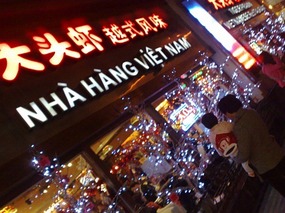
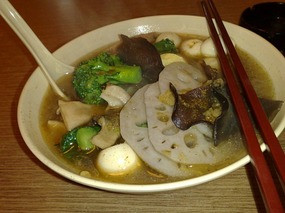
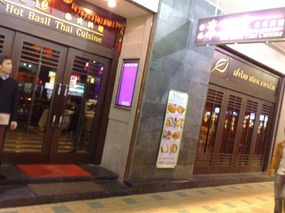
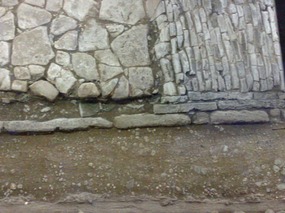
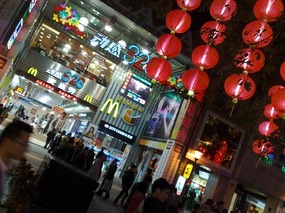
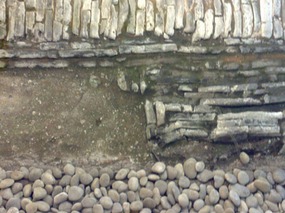
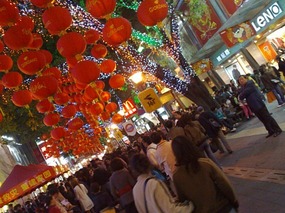
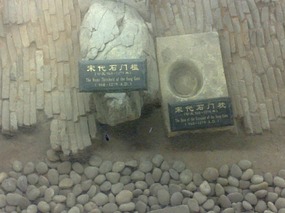
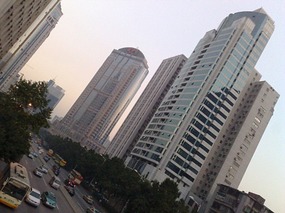
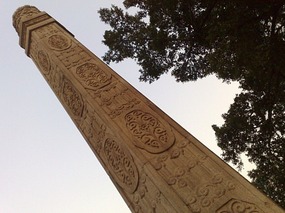
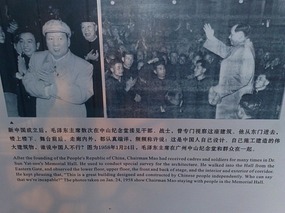
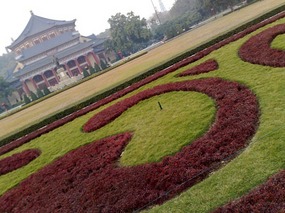
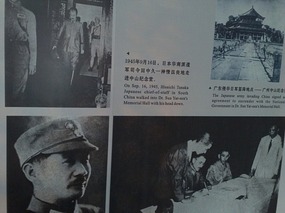
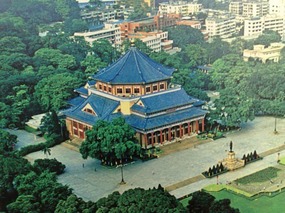
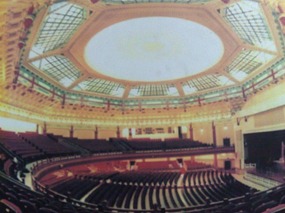
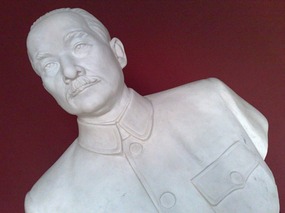
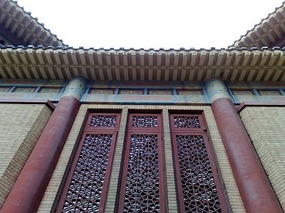
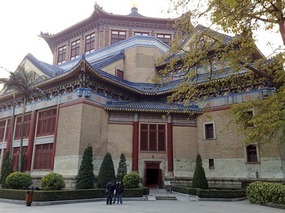
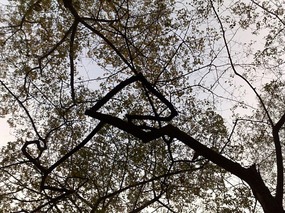


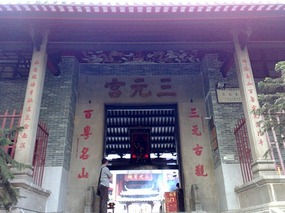
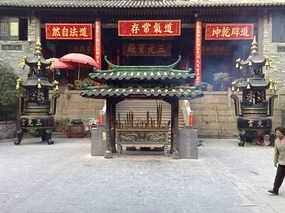
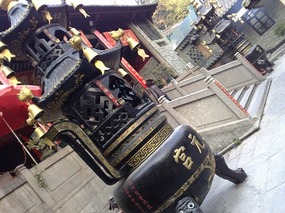
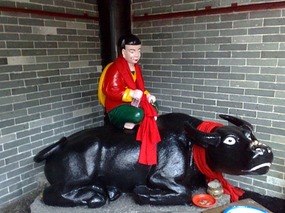
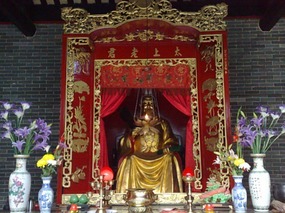
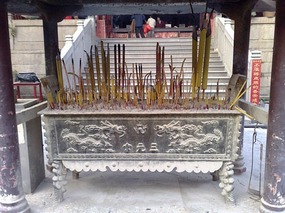
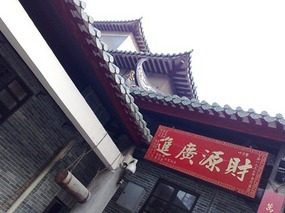
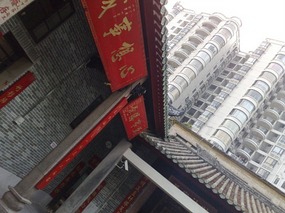
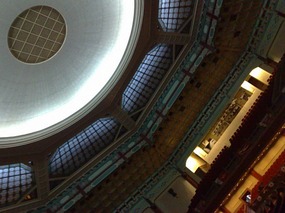

2025-05-22